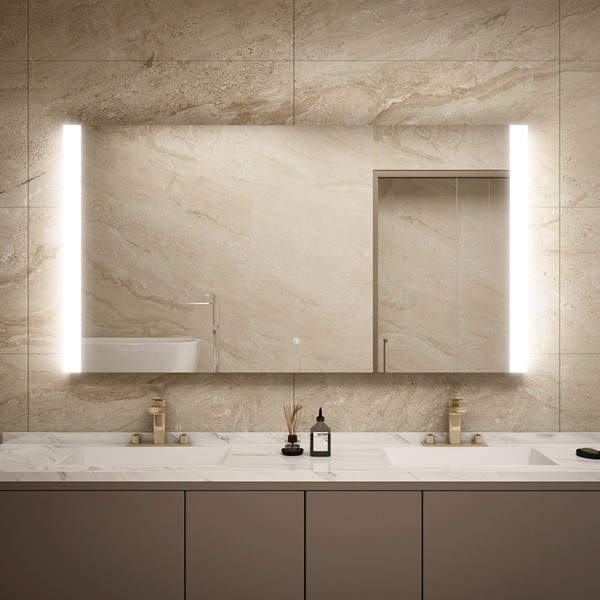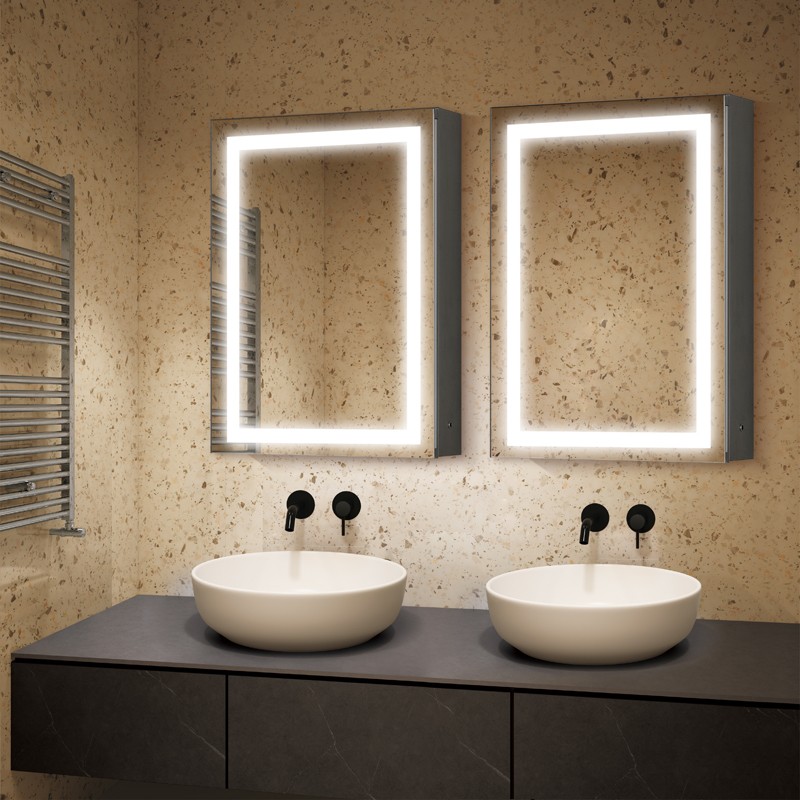Have you ever noticed the remarkable strength and clarity of glass as you look through a window? From towering skyscrapers to the smallest jars, this material is always present in our surroundings and yet, its incredible properties often go unnoticed.
This article is intended for the inquisitive minds curious about the complex realm of glass, aiming to grasp its diverse shapes and purposes.
Our extensive research has given us the expertise to delve into various types of glass and address common concerns in selecting the right type for specific needs. This journey through glass types is tailored for homeowners, designers, and everyone in between, promising not just information but also a personal connection to your experiences and interests. Let's create a rapport as we embark on this enlightening exploration, revealing the beauty and versatility of glass in its many forms.

Glass Engineering Properties
To better understand the different types of glass, let's review some of the key engineering properties that apply to glass.
Properties of light:
-
As a highly transparent material, glass is perfect for a variety of applications such as windows and lenses.
-
The refractive index of glass can change depending on its composition, which has an impact on how it bends light.
Why and Special Features:
-
Glass is known for its brittleness, which means it can break easily without much effort.
-
When it comes to hardness, glass is typically durable and able to withstand scratches.
-
The tensile strength of glass is typically lower when compared to its compressive strength.
Properties of thermal energy:
-
Glass has a low coefficient of thermal expansion, indicating minimal changes in size due to temperature variations.
-
According to thermal conductivity, glass has a low heat conduction rate.
-
Glass heat resistance: Certain types of glass, such as borosilicate, can endure high temperatures without melting or changing shape.
Properties of chemicals:
-
Glass is incredibly resistant to corrosion from a wide variety of chemicals and is completely impervious to both liquids and gases.
-
The durability of glass makes it resistant to weathering and allows it to retain its properties, even when exposed to environmental factors over time.
Properties of electricity:
-
Keep in mind that glass is an exceptional insulator for electricity, which makes it a great option to consider for your electrical needs.
Properties of sound:
-
Glass has the ability to transmit sound, but with some engineering, it can also act as sound insulation in certain applications.
Glass Engineering Properties
-
Glass is completely recyclable, ensuring no loss in quality or purity.
-
Glass is inert, meaning it does not interact with other materials or release harmful substances. This makes it a environmentally-friendly choice.
Glass properties may differ depending on type and composition. Different elements can affect its strength, thermal resistance, and clarity. It is a valuable material in various industries such as construction, automotive, electronics, and packaging due to its versatility.
Types of Glass
Explore the different kinds of glass, each with their own unique properties and applications, used in a variety of industries.

#1 Vacuum Glas
- What is it?: Vacuum insulated glass is a highly advanced type of insulating glass. It consists of two panes with a minuscule gap between them, creating a vacuum by removing the air. This vacuum significantly reduces heat transfer through conduction and convection, making it an extremely efficient form of insulation for windows.
- Applications: Perfect for eco-friendly structures, whether in residential or commercial settings.
- Why and Special Features: Provides exceptional thermal insulation, comparable to a wall, significantly reducing energy costs.
#2 Insulated Glass
- What is it?:IGUs, or insulated glass units, are made up of two or more glass panes that are separated by a spacer and sealed at the edges. The space between the panes is filled with air or inert gases like argon or krypton to improve thermal insulation. To prevent moisture and air from getting in, the edges are usually sealed with a strong sealant.
- Applications: This product is commonly utilized in residential, commercial, and tall structures with windows.
- Why and Special Features:Improve your thermal performance and reduce heat loss in the winter and heat gain in the summer with this product. Choose it for its energy efficiency and ability to reduce noise.
#3 Annealed Glass
- What is it?: Crafted through the float glass process, annealed glass is then cooled gradually in a controlled setting to reduce internal stress and increase durability. While it is less likely to break than traditional glass, it is still important to handle with care as it may break into large, sharp pieces.
- Applications: Double-glazed windows, picture frames, and some types of furniture often utilize this product.
- Why and Special Features: The initial step for various glass processing techniques, this product offers a distortion-free, unobstructed view.
#4 Tempered or Toughened Glass
- What is it?:This tempered glass is created by heating annealed glass, then quickly cooling the surfaces. This technique puts the surfaces under compression and the interior under tension, greatly enhancing its durability and altering its breakage behavior. It is approximately four times stronger than annealed glass.
- Applications: This product is versatile and can be used for shower doors, car windows, and as safety glass in buildings.
- Why and Special Features: When broken, it shatters into small, less harmful pieces, providing increased safety.
#5 Float Glass
- What is it?:Experience the versatility of float glass, created by pouring molten glass onto a bed of molten tin. The end result is a glass with smooth, even surfaces that can be transformed into an array of finished products such as toughened or laminated glass.
- Applications:This input forms the foundation for a variety of glass items, such as windows, mirrors, and car windows.
- Why and Special Features:This surface offers a uniform, flat level and thickness that is perfect for various treatments and applications.
#6 Laminated Glass
- What is it?:This laminated glass is made by bonding two or more layers of glass together using an interlayer, which is usually made of polyvinyl butyral (PVB) or ethylene-vinyl acetate (EVA). Even when broken, this interlayer ensures that the layers remain bonded together, offering extra protection with its strong adhesive bonds.
- Applications: The product is ideal for windshields, skylights, and architectural projects that prioritize safety and security.
- Why and Special Features:The interlayer holds the pieces together, providing added safety and security to maintain integrity even when broken.
#7 Heat Strengthened Glass
- What is it?: Discover the strength of heat-strengthened glass, created with a process similar to tempered glass but with less intense cooling. This type of glass is about twice as strong as annealed glass and won't break into small pieces like tempered glass does.
- Applications: This product is commonly used in double-glazing for added strength.
- Why and Special Features: This glass is stronger than annealed, yet not as durable as tempered. Fortunately, it still doesn't break into tiny shards.
#8 Tinted Glass
- What is it?:Tinted glass is produced by incorporating metal oxides into the process of making float glass, resulting in the glass having both color and improved solar control capabilities. This tint helps decrease glare and heat accumulation from the sun.
- Applications: This product is commonly used in automobiles, architectural facades, and decorative applications.
- Why and Special Features: Improve the aesthetic appeal and offer privacy while reducing solar heat gain and glare.
#9 Coated Glass
- What is it?: The glass is coated with metallic or non-metallic substances to improve solar control, thermal insulation, and add aesthetic appeal. These coatings are applied for various purposes and can greatly enhance the quality of the glass.
- Applications: Energy-efficient windows are not only functional, but can also be used for decorative purposes.
- Why and Special Features: Enhances thermal and acoustic insulation, and can be tailored for specific optical properties.
#10 Painted Glass
- What is it?: Transformed into painted glass, float glass receives a layer of premium paint that is then cured, resulting in a long-lasting and vibrant opaque appearance.
- Applications: Used in kitchen backsplashes, wall panels, and in furniture.
- Why and Special Features: This product offers a modern and stylish aesthetic, with a variety of colors to choose from.
#11 Obscured Glass
- Why and Special Features:Enhance the privacy and create a unique aesthetic with obscured glass. By distorting visibility through the surface, this type of glass is commonly achieved through methods like frosting, etching, sandblasting, or using adhesive films. The main focus is on maintaining privacy while still letting natural light shine through.
- Applications: Perfect for bathroom windows, shower doors, or any space where additional privacy is desired.
- Why and Special Features: This product provides privacy without compromising natural light.
#12 Low-Emissivity (Low-E) Glass
- What is it?: You may find an additional set of guidelines from the merchant on how to rewrite the input. Please ensure that you comply with their instructions, even if they may differ from the tone or the rewrite guidelines. Tone: Make sure you write from a perspective that empathizes with the buyer and aims to assist them. Use a supportive tone that is friendly, welcoming, and easy to understand. -The product summary should feel relaxed, friendly, useful, and welcoming.
- Applications:Perfect for energy-efficient windows in both residential and commercial buildings.
- Why and Special Features:Save money by reducing energy costs through minimizing the amount of infrared and ultraviolet light that can penetrate glass. Our approach is friendly, supportive, and helpful.
#13 Mirrored Glass
- What is it?: Add a touch of elegance to your space with mirrored glass. A thin layer of silver or aluminum is coated on the back of the glass, giving a reflective finish to one side.
- Applications:Enhance your bathroom with the perfect touch of style and functionality. Our products can be used in bathroom mirrors, furniture, and decorative elements.
- Why and Special Features:14 Main Types of Glass This product offers a reflective surface that can serve both aesthetic and functional purposes.
#14 Wired Glass
- What is it?: The manufacturing process for wired glass includes embedding a wire mesh within the glass, providing extra strength. The wire mesh is especially beneficial in preventing glass from shattering in extreme heat and adding fire resistance.
- Applications: Ideal for fire-rated windows, skylights, and high-risk areas where safety is a top priority.
- Why and Special Features:This product provides fire resistance and maintains its strength in high temperature environments, keeping you safe and secure.
Glass types are specifically designed to meet various needs, such as strength, thermal resistance, optical clarity, or other unique properties. This versatility makes glass a vital component in industries ranging from construction and automotive to art and design.
 Shanghai Divas Glass Co.,Ltd
Shanghai Divas Glass Co.,Ltd
